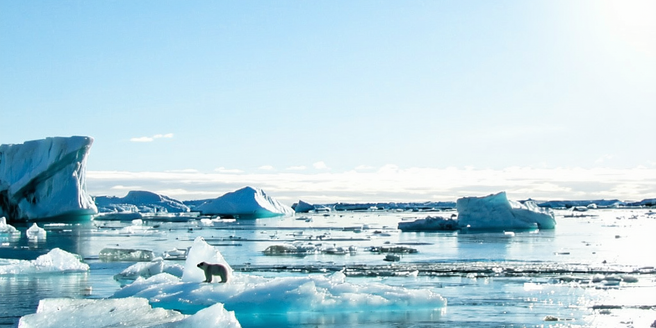
The Science Behind Ice Cap Melting
The melting of ice caps is primarily driven by rising global temperatures, which are a consequence of increased greenhouse gases in the atmosphere. These gases, such as carbon dioxide and methane, trap heat from the sun, leading to a warmer planet. Scientists have extensively studied the cryosphere—the frozen water part of the Earth—and found that as temperatures rise, ice sheets in Greenland and Antarctica show significant reductions. This melting contributes to the rise in sea levels, affects ocean currents, and disrupts ecosystems. The process is further accelerated by positive feedback loops, where melting ice reduces the Earth’s albedo, or reflectivity, causing more solar absorption and further warming. Understanding these mechanisms helps in predicting future changes and implementing effective climate policies.
Impact of Melting Ice on Sea Levels
As ice caps melt, they pour vast amounts of freshwater into the oceans, increasing global sea levels. This phenomenon poses a serious threat to coastal regions around the world. Low-lying areas are particularly vulnerable to flooding, resulting in displacement of communities and loss of arable land. Furthermore, the influx of freshwater disrupts oceanic systems that drive major climate patterns, such as the Atlantic Meridional Overturning Circulation. This can lead to unpredictable weather patterns, including more frequent and severe storms. Accurate models that predict sea-level rise are crucial for developing adaptive strategies for coastal defenses, urban planning, and conservation efforts. Addressing the source of ice melting, namely greenhouse gas emissions, remains paramount to mitigate these impacts and preserve coastal habitats.
Weather Extremes: A Growing Concern
The intensification of weather extremes is closely linked to the warming climate. As global temperatures rise, the increased energy in the atmosphere enhances the frequency and severity of extreme weather events such as hurricanes, heatwaves, and heavy rainfall. Meteorological studies indicate that warmer air can hold more moisture, leading to intense storms and flooding. Conversely, prolonged heat periods exacerbate drought conditions in susceptible regions. These extremes strain infrastructure, disrupt agriculture, and pose health risks, triggering a societal impetus to adapt quickly. Understanding how climatic shifts contribute to these occurrences allows for more accurate forecasting, which is invaluable for preparedness and response measures. It is imperative to prioritize research and international cooperation to mitigate the wider impacts of these phenomena on global populations.
Link Between the Ice Caps and Global Weather
The connection between melting ice caps and global weather patterns is a complex interplay that scientists are striving to unravel. As ice caps diminish, they contribute to the alteration of temperature gradients and atmospheric circulation patterns. The reduction of Arctic ice impacts the jet stream, which influences weather patterns and can lead to prolonged periods of unusual weather. For example, the weakening of the polar vortex has been linked to unusual winter conditions in the Northern Hemisphere. Furthermore, the freshwater influx into the oceans from melting caps affects thermohaline circulation, potentially altering weather systems. Understanding these links is critical for improving climate models and predicting weather anomalies. Continued research is essential to fully grasp the cascade of effects initiated by changes in the cryosphere.
Economic Consequences of Extreme Weather Events
The economic implications of extreme weather events are substantial, affecting nations both rich and poor. The destruction of infrastructure, agriculture, and homes necessitates enormous financial resources for rebuilding and disaster recovery. Supply chains are disrupted, leading to increased costs for goods and services. Moreover, sectors like insurance face amplified risks and uncertainties, often resulting in higher premiums and financial instability. The labor market also suffers due to weather-induced dislocations and health impacts on populations. Governments face fiscal pressures due to adaptive and mitigative expenditures, and investment in resilient infrastructure becomes a critical priority. Addressing climate change head-on by reducing emissions and investing in sustainable technologies is indispensable to cushion economies from the adverse effects of these events.
Mitigation Strategies for Climate Change
Effective mitigation strategies for climate change require a multifaceted approach, combining policy, technology, and individual action. Transitioning to renewable energy sources such as solar, wind, and hydroelectric power is fundamental in reducing greenhouse gas emissions. Carbon pricing mechanisms, like taxes and cap-and-trade systems, provide economic incentives to reduce emissions. Innovations in technology, from carbon capture and storage to improvements in energy efficiency, play a critical role in these strategies. Additionally, reforestation and conservation efforts enhance carbon sinks and preserve biodiversity. On an individual level, lifestyle changes, including reducing energy consumption and sustainable consumption habits, contribute to mitigation. Governments, industries, and communities must collaborate to implement these strategies effectively, ensuring a coordinated response that can address the global nature of climate change effectively.
